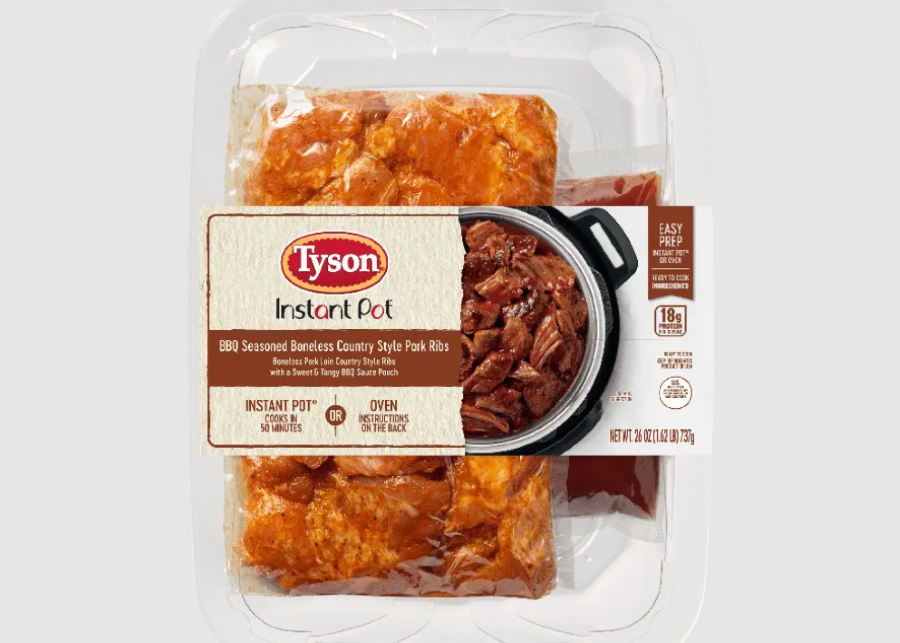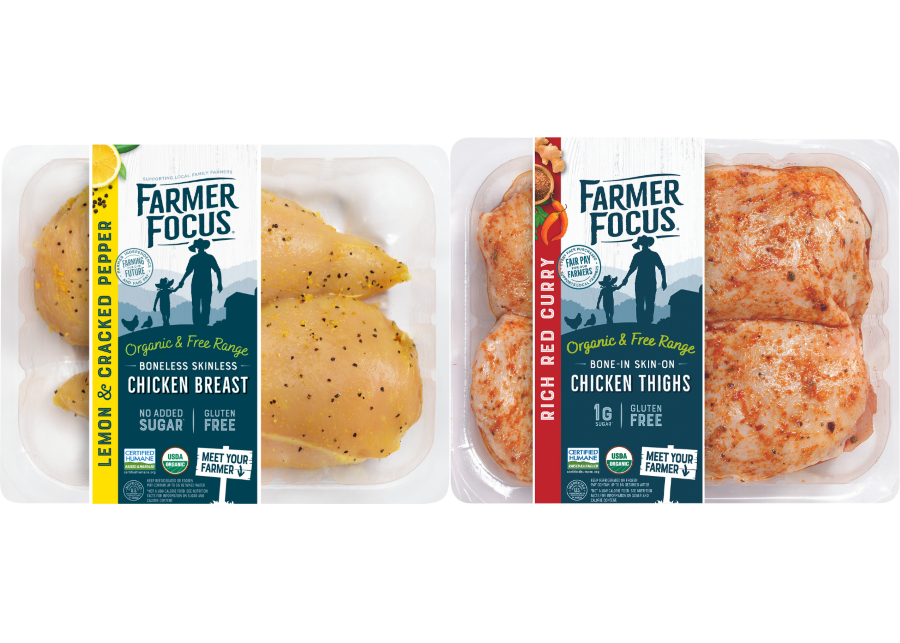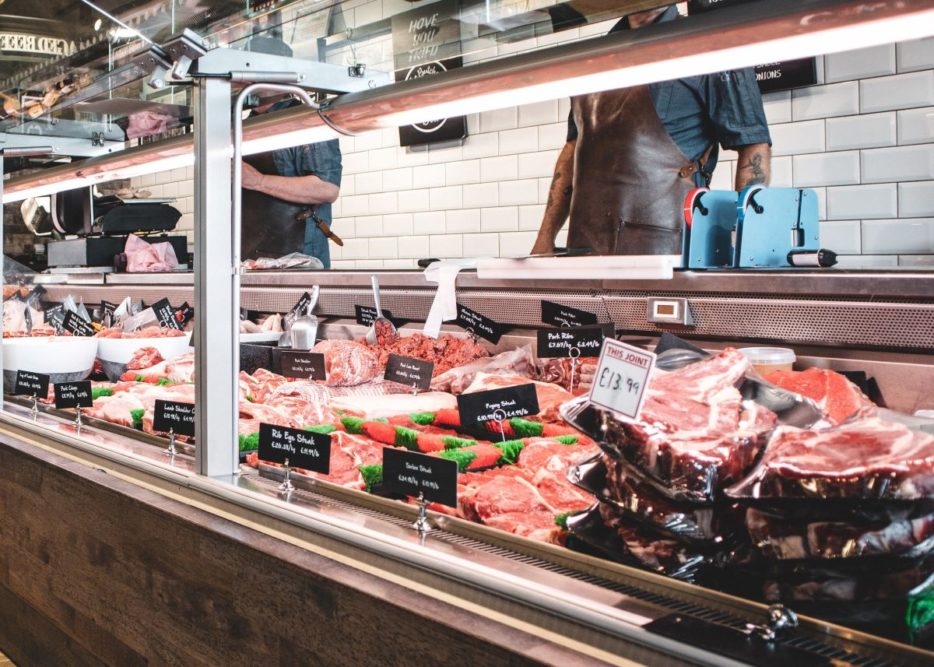A combination of inflation, a labor shortage and supply chain issues have caused consumers to cut back on spending in recent months. However, consumers are still wanting good quality meals and demand remains strong in most convenience meat segments as shoppers continue to look for easy ways to create their favorite meals.
“It boils down to one word—convenience,” said Ozlem Worpel, director of fresh meats marketing for Tyson Foods, based in Springdale, Ark. “Retailers are facing continued labor constraints, especially around high-demand seasons like summer grilling and the winter holidays. Sliced, diced and cubed protein or pre-seasoned or marinated meats help grocers maintain high-quality, consistent service for their shoppers with less pressure on staff.”
 Image courtesy of Tyson Foods
Image courtesy of Tyson Foods
According to the 2022 Power of Meat report, the value-added category saw a 4.7% increase in dollar sales growth to represent more than $5 billion in 2021. Two-thirds of meat shoppers surveyed said that they “frequently” or “sometimes” purchased value-added products, compared to 37% in 2016. When asked their reason for purchasing value added meat products, the top replies from shoppers were time savings (28%), better taste or flavor (22%) and simply for something different (20%).
Value added meat protein was in extremely high demand during the pandemic.
“In the years leading up to the pandemic, consumers we surveyed began to view case ready offerings as equal or better quality than full-service products,” Worpel said. “Then, the pandemic fast-tracked grocery ecommerce adoption by several years. We’re seeing that a lot of shoppers who moved online plan to stay there, even as pandemic restrictions loosen. Further, as consumers continue to prepare more meals at home, convenience and variety are of increased importance, so they are experimenting with seasoned and marinated products for variety, or cubed/diced meats to save time.”
Annie Hennen, senior account executive for Chicago-based Midan Marketing, noted that with reduced foodservice options during the pandemic, retail convenience items had a chance to shine in the value-added meat space.
“Now, after two years of cooking at home, adventurous eaters are looking for bold, authentic foods that are also simple and do not require complex pantry items or a full day of cooking,” she said. “Value-added meat delivers a time-saving solution that delivers on flavor and eating experience. Value added meat offers the ability to align with a variety of dietary habits and even personal values.”
Consumers are also depending on convenient meal solutions and meal prep inspiration as they are not only accepting of inspiration from retailers, they depend on it as they continue to cook more meals at home while battling cooking fatigue.
Lisa Selk, vice president of marketing, meat products at Hormel Foods, based in Austin, Minn., noted the value-added meats category has seen significant growth over the last few years as more meals are being sourced from home, and new shoppers have joined the category to continue that growth into the future.
“During the last couple of years, many people rediscovered the joys of cooking and enjoyed their time in the kitchen recreating their favorite comfort dishes,” she said. “The use of value-added meats became part of that rediscovery. One of the fastest growth segments in the category are heat-and-eat meat entrees which gives the preparer a jump start on the main component of a dish.”
Another benefit value-added meats bring is the ability to have a quick, satisfying meal on hand in the refrigerator for those busy nights.
Ed Hinson, chief sales officer for Farmer Focus, based in Harrisonburg, Va., noted consumers seem to be cutting back on restaurant spend to fight inflation, as trading off a restaurant meal for a restaurant inspired pre-seasoned item at grocery is often viewed as a cost saving by consumers.
“There is huge potential for innovation and category expansion in this space—especially in more culinary inspired and clean pre-seasoned products,” he said. “Retailers are excited about and willing to make space for value-added products because they bring excitement to their stores and/or websites and they are a reason for their shoppers to shop there.”
 Images courtesy of Farmer Focus
Images courtesy of Farmer Focus
Improving product offerings
As retailers consider the possibility of value-added meats, Hennen noted it’s important to remember to have a broad offering throughout the store, as seasoned, ready-to-cook cuts that are ready for the grill will be popular in the summer months, creating many valuable opportunities for retailers to cross merchandise.
Hormel Foods is focused on innovating in the value-added meat space with high quality, convenient meal solutions and providing recipes that inspire creativity to those who are looking for fresh meal ideas.
Products like its Hormel Square Table entrees and Lloyd’s Barbeque brand partnership with two-time world barbeque sauce champion Pig Beach Mustard BBQ Sauce are just some of the options it offers for shoppers that meet their need for great tasting, restaurant quality products that are convenient and easy to make.
For Tyson Foods, value-added captures a lot of different products. This includes everything from case ready to further processed and even labeling and packaging.
“To that end, we’ve invested in some key areas to support our customers in this area,” Worpel said. “For starters, last year we opened a new case-ready facility in Eagle Mountain, Utah, expanding our production capacity by 24%. We’ve also invested in our ecommerce capabilities to help our retail partners navigate the intricacies of omnichannel marketing.”
Case ready products, she explained, are ideal for ecommerce due to their consistent size and weight. Branded case ready products such as Chairman’s Reserve Meats products offer additional attributes for savvy consumers as well as the recipe inspiration they’re seeking.
“Additionally, category staples like ground beef and meal kits remain strong, too,” Worpel said. “The popularity of the Instant Pot spurred a renaissance of the meal kit, and Instant Pot kits remain one of our top sellers.”
Many of Midan Marketing’s meat clients are looking to stand out through product attributes such as flavorful meats that are marinated and ready to cook—or even fully cooked.
“New items that allow confident cooks to play with their kitchen tools like air fryers and electronic pressure cookers, but also don’t require exotic ingredients are also popular,” Hennen said.
Proper marketing
Value-added meat products sell best when retailers put effort behind highlighting what’s available and on sale.
“Most shoppers do some or all their meal planning in a digital space; whether finding inspiration on social platforms like YouTube, Instagram or TikTok, or using retail websites or apps to help streamline their grocery shopping experience,” Worpel said.
Farmer Focus likes to leverage retailer partnerships and media opportunities around unique initiatives that both drive product trial and tell a larger brand story.
“Earth Day and International Farmers Day are two examples of holidays, not traditionally celebrated at grocery, where we partner with grocers to create unique programs that drive growth for both teams,” Hinson said. “Additionally, we take a data and insights focused approach to our POS and packaging in order to ensure we are differentiated at shelf and keeping up with shifting consumer trends.”
Hormel Foods’ communications and promotions focus on helping the shopper plan for weeknight meals they can look forward to serving.
It’s highly recommended that retailers create a seamless shopping experience, in-store and online.
“Offering preparation suggestions, recipe inspiration and detailed product information differentiates the retailer and helps busy consumers,” Worpel said. “Value-added products offer convenience and variety and can help inspire repeat purchases.”
Tyson Foods supports its retail partners by equipping them with data-driven consumer insights, strategic omnichannel marketing solutions and unparalleled ecommerce support.
Packaging is critical and has become even more so in recent years.
“Ground beef represents more than a third of online meat sales, so packaging like brick pack and chub ensure for a convenient, no-mess experience,” Worpel said. “Vacuum and roll stock packaging ensure freshness and convenient portions to cook immediately or easily store in the freezer.”
Hennen said that the majority of value-added meat consumers are more likely to purchase online, so this creates many marketing opportunities.
“We often encourage our clients to complement their brick-and-mortar stores with e-commerce capabilities, as value-added meat shoppers tend to be loyal online customers and have higher basket rings,” she said. “The online shopping space creates even more opportunities to tell a brand’s story than in the retail meat case, a valuable tool for consumers interested in transparency.”
Still, the type of marketing that is effective for value-added meats depends on which demographic is seeking the product. For instance, consumers seeking its convenience are often less driven by label claims, but coupons and cross-merchandising in-store can be valuable marketing tools to use with these shoppers. Meanwhile, consumers seeking value-added meats /flavor align more with the consumer segment of “protein progressives” and can be greatly influenced by label claims, along with online cooking demonstrations.
Hennen noted value-added meats are sought after because of the old saying, “Less is more.”
“Less waste, prep ingredients, knowledge, etc.” she said. “This all equals more value to the consumer, and they’re willing to pay more for those benefits. Consumers have come to love the flavor and family time associated with cooking at home, but they need convenience to accommodate their busy schedules. Retailers able to ease the burden of meal planning through meal kits and prepared entrees will capture the value-added meat consumer.”

